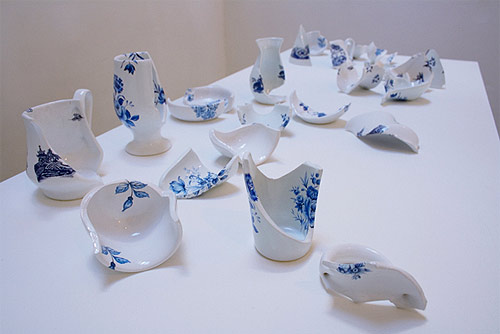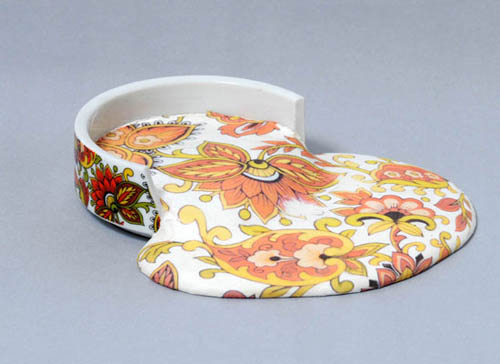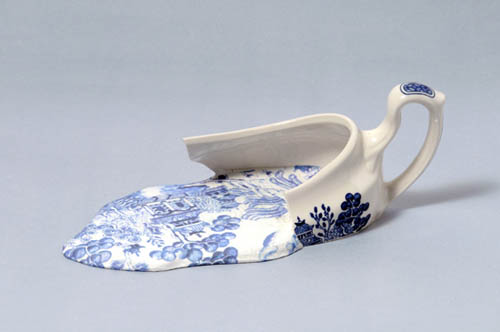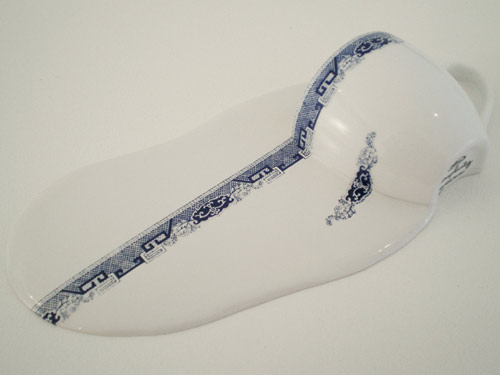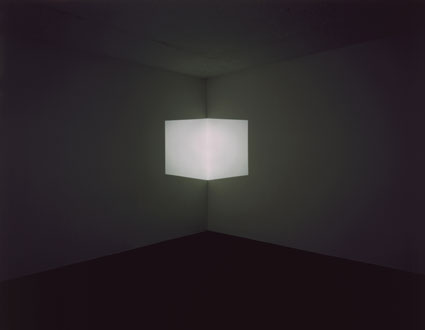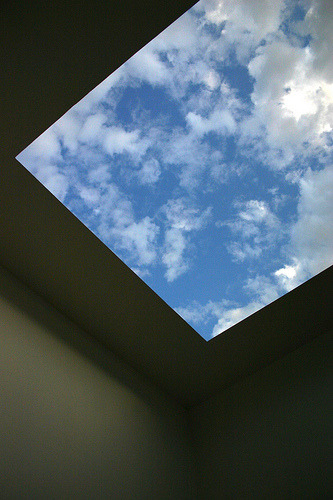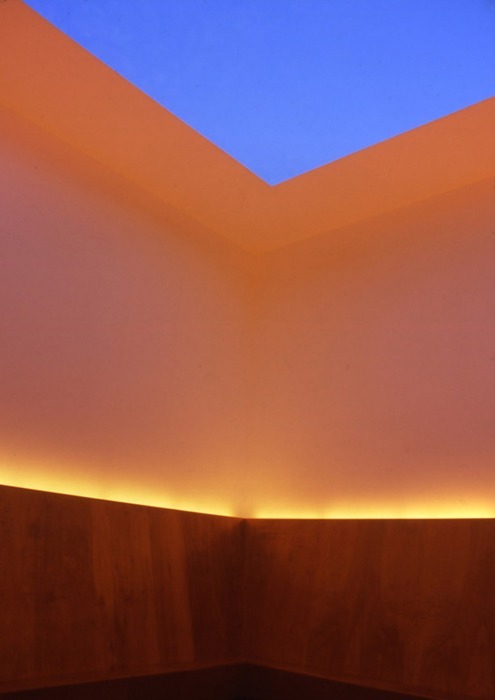Brian Dettmer
Brian Dettmer is a master of altering books. He works by cutting away sections of books to reveal images or phrases buried deep within them. At other times, he creates sculptural works with the books, changing their shapes and context. He describes his work this way: "When an object's intended function is fleeting the necessity for a new approach to its form and content arises… Through meticulous excavation or concise alteration, I edit or dissect a communicative object or system such as books, maps and other media" (
http://glasstire.com/?p=9627). His most recent exhibition
New Worlds to Conquer, depicts the fascination and excitement that can be generated by exploration. The works show wonders of the world, representations of historic events and architecture, and portrayals of all types of people. Just as the book are complex mazes of images and ideas, so too are the ideas they represent.
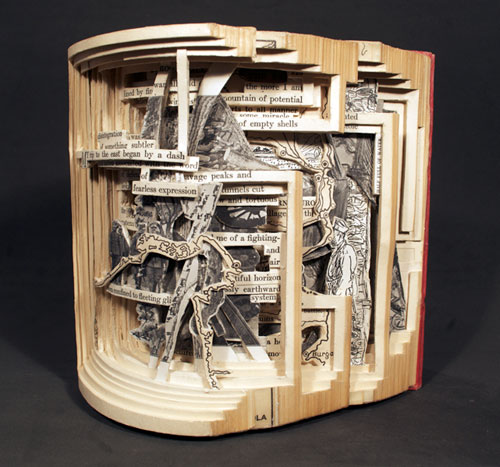 The War on All Fronts, Altered book, 2010
The War on All Fronts, Altered book, 2010
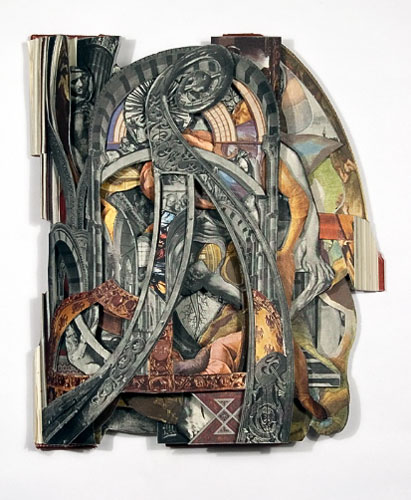 Civilisation Part 1, Altered book, 2010
Civilisation Part 1, Altered book, 2010
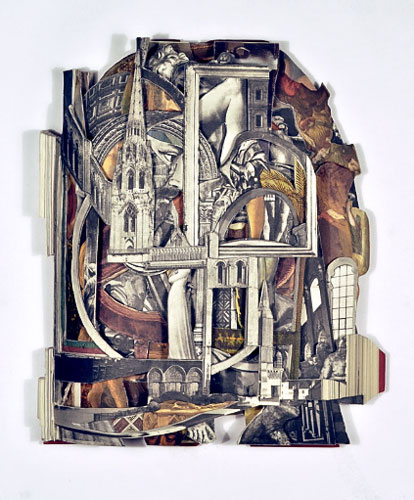 Civilisation Part 4, Altered book, 2010
Civilisation Part 4, Altered book, 2010
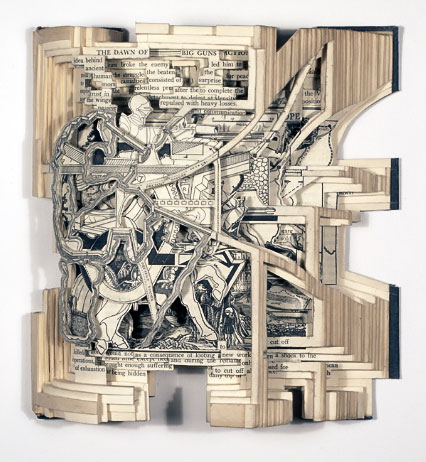 War Through the Ages, Altered book, 2010
Alice Austin
War Through the Ages, Altered book, 2010
Alice Austin
Alice Austin's experience as a curator, history in printmaking, and love for unusual book shapes and structures combine in her artist's books. The books are beautiful, unique structures that play between the realms of sculpture and traditional books. Instead of words, she seems to use color and texture to communicate ideas. For example, in her work
Milk Butter Eggs, she examines the quiet, monotony of daily chores. The accordion fold with identical pop-outs reflects the repetition of the houses that are printed on them. Inside the pop-outs are views of a kitchen and laundry line and the view from the kitchen during a coffee break. The colors are mostly soft save for the long strip of bright blue houses. The blue serves as a continuous, unifying line across sections that draws the piece together. This repitition of imagery and shape reflects her subject's monotonous nature, and her use of color shows how days and chores tend to bleed together without distinction.
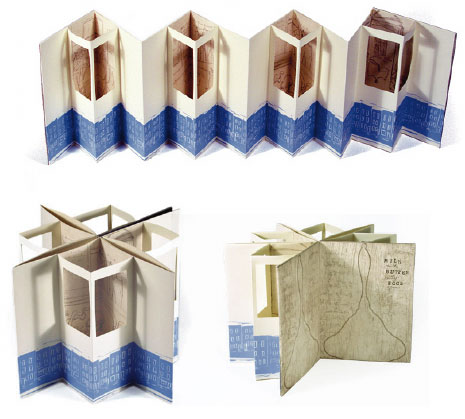 Milk Eggs Butter, relief-printed accordian structure, 2004
Milk Eggs Butter, relief-printed accordian structure, 2004
Other examples of her work:
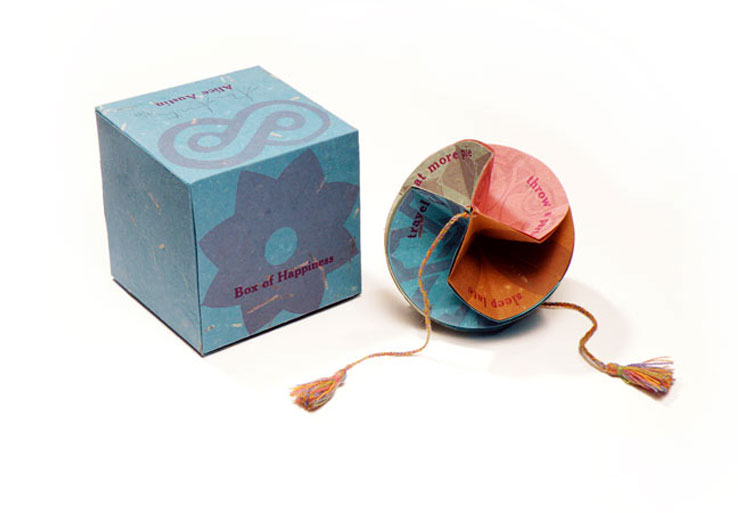 Box of Happiness, 2009
Box of Happiness, 2009
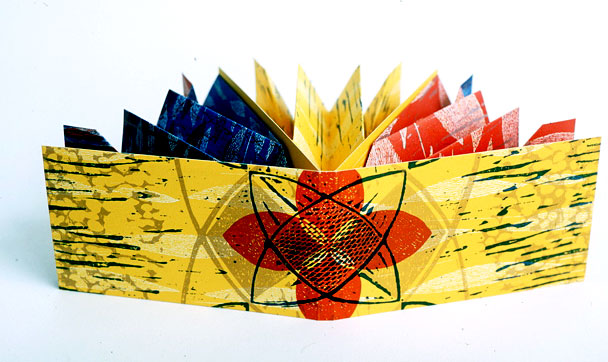 Red, Yellow, Blue, 2000
Jacqueline Rush Lee
Red, Yellow, Blue, 2000
Jacqueline Rush Lee
Intrigued by the histories, meanings, and contexts of the books, Jacqueline Rush Lee transforms them into sculptures that attempt to convey new ideas. She sees the physical and conceptual aspects of the works as being interconnected. Thus, by changing the books into sculptures, she draws new narratives from them. Unlike Dettmer who cuts away parts of the books to reveal inner text and ideas, the majority of Rush Lee's works deal with the book as a whole. She does not call out specifics from the text, leaving the interpretation of her work more open-ended.
 Anthologia (Devotion Series), Altered books, 2008
Anthologia (Devotion Series), Altered books, 2008
 Endoskeleton, 2000
Endoskeleton, 2000
 Lorem Ipsum II: From the Summer Reading Series, 2009-2010
Lorem Ipsum II: From the Summer Reading Series, 2009-2010
 Cube, Altered book
Cube, Altered book



































